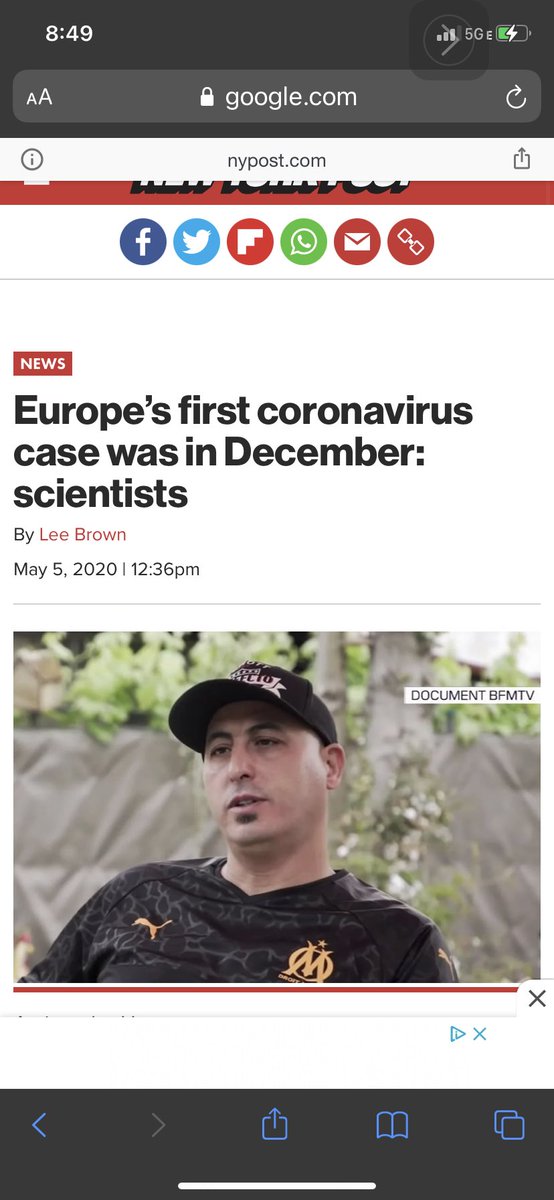
Shell Mex House - Wikipedia
The building was for many years the London headquarters of Shell-Mex and BP, for which it was originally built. Shell-Mex and BP was a joint venture company created by Shell and British Petroleum in 1932, when they decided to en.wikipedia.org/wiki/Shell_Mex…
The building was for many years the London headquarters of Shell-Mex and BP, for which it was originally built. Shell-Mex and BP was a joint venture company created by Shell and British Petroleum in 1932, when they decided to en.wikipedia.org/wiki/Shell_Mex…
merge their United Kingdom marketing operations. Today, simply known as 80 Strand, most of its floors are occupied by companies belonging to Pearson plc
During World War II, the building became home to the Ministry of Supply, which co-ordinated the supply of equipment to the
During World War II, the building became home to the Ministry of Supply, which co-ordinated the supply of equipment to the
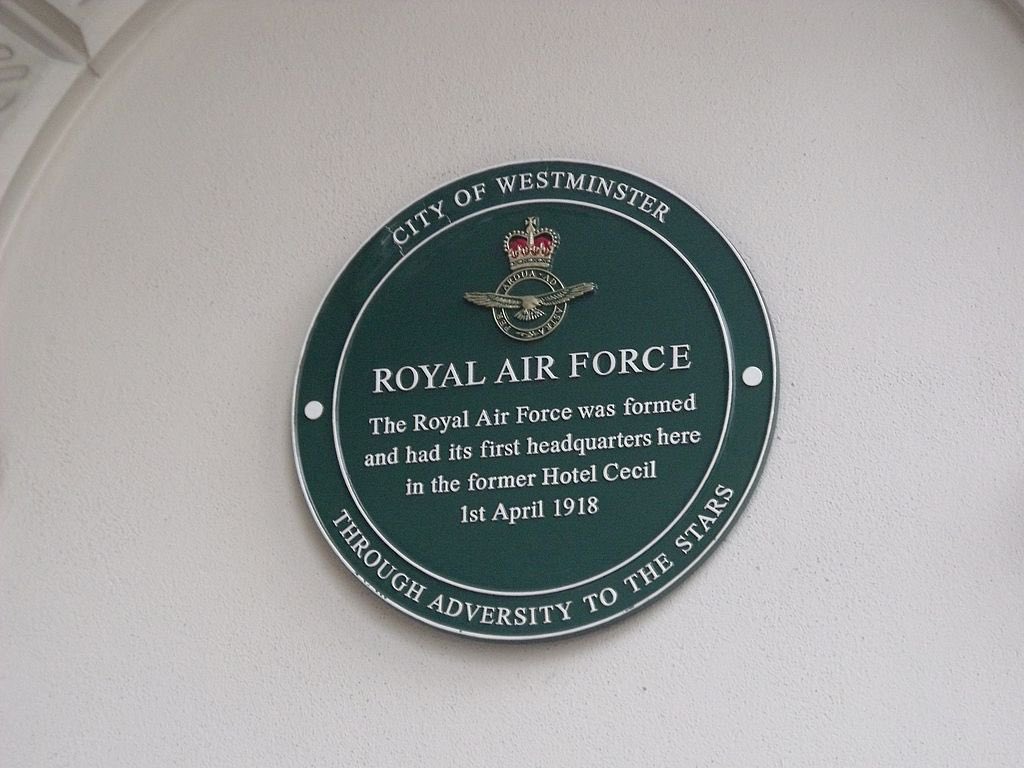
national armed forces. It was also the home of the Petroleum Board, which handled the distribution of petroleum products during the war. It was badly damaged by a bomb in 1940. The building reverted to Shell-Mex and BP on 1 July 1948, with a number of floors remaining occupied
by the Ministry of Aviation (latterly the Board of Trade, Civil Aviation Division) until the mid-1970s. During this time, until the department's move to the present location in Farnborough, the building was also the headquarters for the Air Accidents Investigation Branch.
The Petroleum Board was established within a week of the outbreak of the Second World War in September 1939. It was based in Shell-Mex House on the Strand London. The membership comprised the Chairmen or Chief Executives of most of the petroleum and oil companies operating in
the UK. The original corporate membership was the Anglo-American Oil Company Limited, the National Benzole Company Limited, Shell-Mex and BP Limited, and Trinidad Leaseholds Limited and their associated companies. The company was founded by Samuel Pearson in 1844 as a building
and engineering concern operating in Yorkshire under the name S. Pearson & Son.[6] In 1880, control passed to his grandson Weetman Dickinson Pearson (later 1st Viscount Cowdray), an engineer, who in 1890 moved the business to London and turned it into one of the world's largest
construction companies. The company also built the Admiralty Harbour at Dover, the Halifax Dry Dock in Canada, the East River Railway Tunnels in New York City, the Mexican Grand Canal that drained Mexico City, the Tehuantepec Railway in Mexico, and railways and harbours around
the world.[10][11] In November 1915, the firm began construction of HM Factory, Gretna, the largest cordite factory in the UK during World War I.[2] In 1907 Weetman Pearson founded investment company Whitehall Securities Corporation Ltd which played an important role in the
development of British airlines in the 1930s. In 1919, the firm acquired a 45% stake in the London branch of merchant bankers Lazard Brothers, an interest which was increased to 80% in 1932 during the depression years. On July 12, 1848, three brothers, Alexandre Lazard, Lazare
Lazard, and Simon Lazard, founded Lazard Frères & Co. as a dry goods merchant store in New Orleans, Louisiana. By 1851, Simon and two more brothers, Maurice and Elie, had all moved to San Francisco, California, while Alexandre moved to New York. Lazard Frères began to serve
miners engaged in the California Gold Rush, and soon expanded into banking and foreign exchange.[The name "Lazard Freres" means "Lazard Brothers" or "the Brothers Lazard" in French. It refers to associations of the Lazard brothers to form various financial services
institutions with world-wide offices and investments. In the economic boom following World War II, the American operations of Lazard expanded significantly under the leadership of the financier André Meyer. 



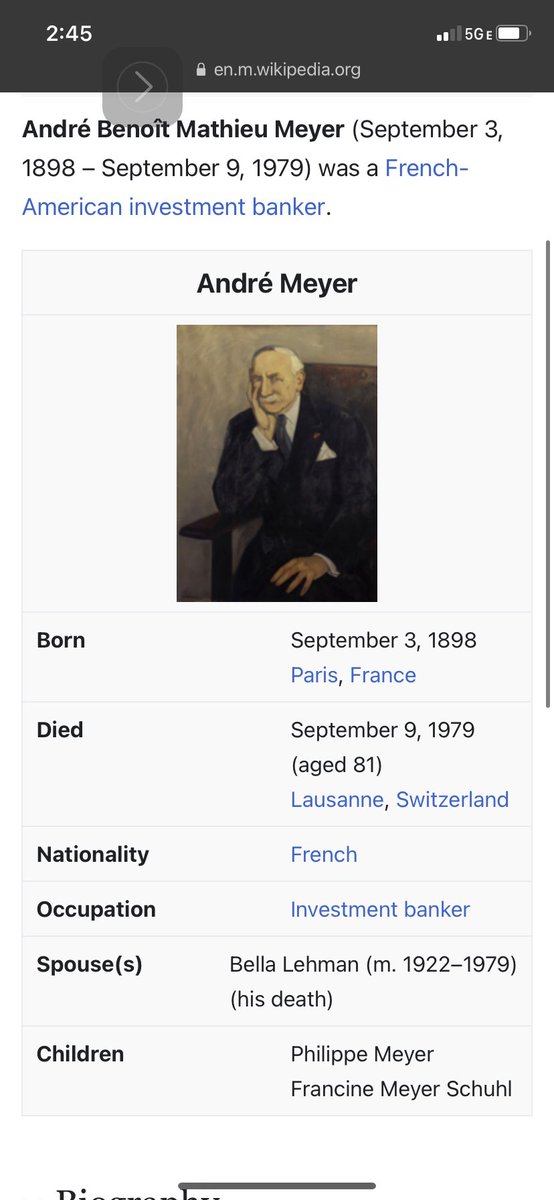
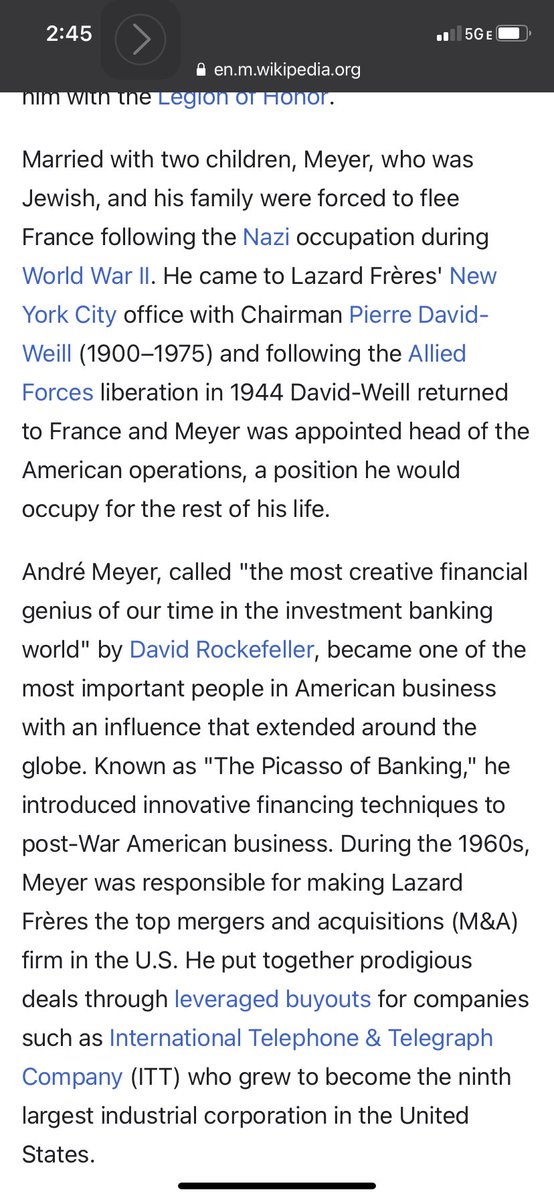
Lazard's New York City headquarters spans the top floors of 30 Rockefeller Plaza,[11] including what used to be Room 5600, the former offices of the Rockefeller family dynasty. The construction of Rockefeller Center occurred between 1932 and 1940[note 1] on land that John D. 


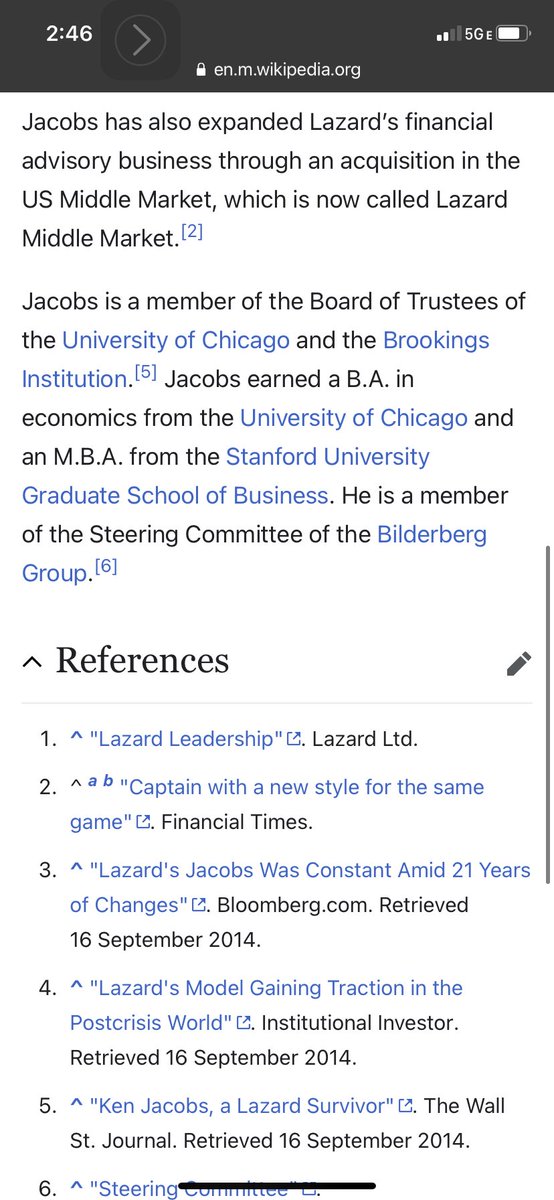
Rockefeller Jr. leased from Columbia University.[6] The Rockefeller Center site was originally supposed to be occupied by a new opera house for the Metropolitan Opera.[7] By 1928, Benjamin Wistar Morris and designer Joseph Urban were hired to come up with blueprints for the
house.[8] However, the new building was too expensive for the opera to fund by itself, and it needed an endowment,[9] and the project ultimately gained the support of John D. Rockefeller Jr.[9][10] The planned opera house was canceled in December 1929 due to various issues, with
the new opera house eventually being built at Lincoln Center, opening in 1966. The Rockefeller family's Standard Oil Company moved into the RCA Building in 1934. The Rockefeller family moved into various floors and suites throughout the same building to give potential tenants
the impression of occupancy.[34] In particular, the family's office took up "Room 5600" on the entire 56th floor,[35] while the family's Rockefeller Foundation took up the entire floor below, and two other organizations supported by the Rockefellers also moved into the building.
By 1937, there were 392 employees of Room 5600, and by the time World War II was over, Room 5600 comprised the entire 54th through 56th floors.[37] The family offices became a hub for the family's political activity, with ties to both the Democratic and Republican parties at the
city, state, and national levels. From the end of 1960 through October 1993, the building's mezzanine level housed the New York City weather forecast office of the National Weather Service; it was relocated to eastern Long Island, on the grounds of Brookhaven National
Laboratory at Upton, New York. The 65th floor of the building is an event room and restaurant named the Rainbow Room, previously run by the Cipriani family. The office, which was established for intelligence and propaganda services, was headed by Canadian industrialist William
Stephenson. Its first tasks were to promote British interests in the United States, counter Nazi propaganda, and protect the Atlantic convoys from enemy sabotage.
The BSC was registered by the State Department as a foreign entity. It operated out of Room 3603 at RockefellerCenter
The BSC was registered by the State Department as a foreign entity. It operated out of Room 3603 at RockefellerCenter
and was officially known as the British Passport Control Office from which it had expanded. BSC acted as administrative headquarters more than operational one for SIS and the Special Operations Executive (SOE) and was a channel for communications and liaison between US and
British security and intelligence organisations. Stephenson was soon a close adviser to Roosevelt, and suggested that he put Stephenson's good friend William J. "Wild Bill" Donovan in charge of all U.S. intelligence services. Donovan founded the U.S. Office of Strategic
Services (OSS), which in 1947 would become the Central Intelligence Agency (CIA). As senior representative of British intelligence in the western hemisphere, Stephenson was one of the few persons in the hemisphere who were authorized to view raw Ultra transcripts of German
Enigma ciphers that had been decrypted at Britain's Bletchley Park facility. He was trusted by Churchill to decide what Ultra information to pass along to various branches of the U.S. and Canadian governments. Not least of Stephenson's contributions to the war effort was the
setting up by BSC of Camp X, the unofficial name of the secret Special Training School No. 103, a Second World War paramilitary installation for training covert agents in the methods required for success in clandestine operations.[21] Located in Whitby, Ontario, this was the
first such training school in North America. Estimates vary, but between 500 and 2,000 British, Canadian and American covert operators were trained there from 1941 to 1945 Reports indicate that Camp X graduates worked as "secret agents, security personnel, intelligence officers,
or psychological warfare experts, serving in clandestine operations". Many were captured, tortured, and executed; survivors received no individual recognition for their efforts."[22][23] Camp X graduates operated in Europe (Spain, Portugal, Italy and the Balkans) as well
as in Africa, Australia, India and the Pacific. In July 1946 General Reinhard Gehlen arrived on the post and established the Gehlen Organization which later went on to become the BND (Bundesnachrichtendienst, or "Federal Intelligence Service").
In 1946, Kissinger was reassigned to teach at the European Command Intelligence School at Camp King and, as a civilian employee following his separation from the army, continued to serve in this role. From 1956 to 1958 he worked for the Rockefeller Brothers Fund as director of
its Special Studies Project.[32] He served as the director of the Harvard Defense Studies Program between 1958 and 1971. In 1958, he also co-founded the Center for International Affairs with Robert R. Bowie where he served as its associate director. Outside of academia, he
served as a consultant to several government agencies and think tanks, including the Operations Research Office, the Arms Control and Disarmament Agency, Department of State, and the RAND Corporation.[Keen to have a greater influence on U.S. foreign policy, Kissinger became
foreign policy advisor to the presidential campaigns of Nelson Rockefeller, supporting his bids for the Republican nomination in 1960, 1964, and 1968. Kissinger first met Richard Nixon at a party hosted by Clare Booth Luce in 1967, saying that he found him more "thoughtful"
than he expected. In her youth, she briefly aligned herself with the liberalism of President Franklin Roosevelt as a protégé of Bernard Baruch In 1946 he was the United States representative to the United Nations Atomic Energy Commission (UNAEC), though his Baruch Plan for
international control of atomic energy was rejected by the Soviet Union. Baruch founded the Intercontinental Rubber Company of New York, which dominated the guayule rubber market in the U.S. with holdings in Mexico. His partners in the enterprise were Senator Nelson Aldrich,
Daniel Guggenheim, John D. Rockefeller, Jr., George Foster Peabody and others.[9] By 1903 Baruch had his own brokerage firm and gained the reputation of "The Lone Wolf of Wall Street" because of his refusal to join any financial house. By 1910, he had become one of Wall
Street's best-known financiers. In 1944, Baruch commissioned a committee of physicians which developed recommendations for the formal establishment of the medical specialty of Physical Medicine and Rehabilitation and provided over a million dollars of funding to many medical
schools to further this cause. Baruch's father, Simon Baruch, had been a surgeon and was the first teacher of physical medicine at Columbia.[23] In the same year, Baruch and Dr. Howard Rusk, an Air Force physician, advised President Roosevelt to expand rehabilitation programs
for injured soldiers within all the armed forces. After the war, these programs were adopted by the Veterans' Administration. Winston Churchill and Baruch were personal friends, and Churchill sometimes stayed in Baruch's New York home when visiting the United States.
Continental was founded during World War I in 1916, after President Woodrow Wilson asked the Intercontinental Rubber Company of Bernard Baruch, Joseph Kennedy, and J. P. Morgan to grow guayule. Guayule is a plant that produces latex and can be used to make rubber if, as many
Americans feared, the German navy were to cut off shipping lanes and imports of rubber from the Far East.
The guayule project was abandoned after the end of World War I. In 1922, Queen Wilhelmina of the Netherlands bought the farm and rented the fields to cotton farmers
The guayule project was abandoned after the end of World War I. In 1922, Queen Wilhelmina of the Netherlands bought the farm and rented the fields to cotton farmers
until 1949.[During World War II, in late 1944, the United States Army established a prisoner of war camp for German POWs next to the farm. Camp Continental, as it was called, was built to house 250 inmates and forty guards. Because of a labor shortage caused by the war, the
prisoners were put to work in the nearby fields. Although very little is known about the history of the camp, on more than one occasion the American guards had to use billy clubs to "quell disorderly prisoners as they were prone to pro-Nazi uprisings."
• • •
Missing some Tweet in this thread? You can try to
force a refresh





